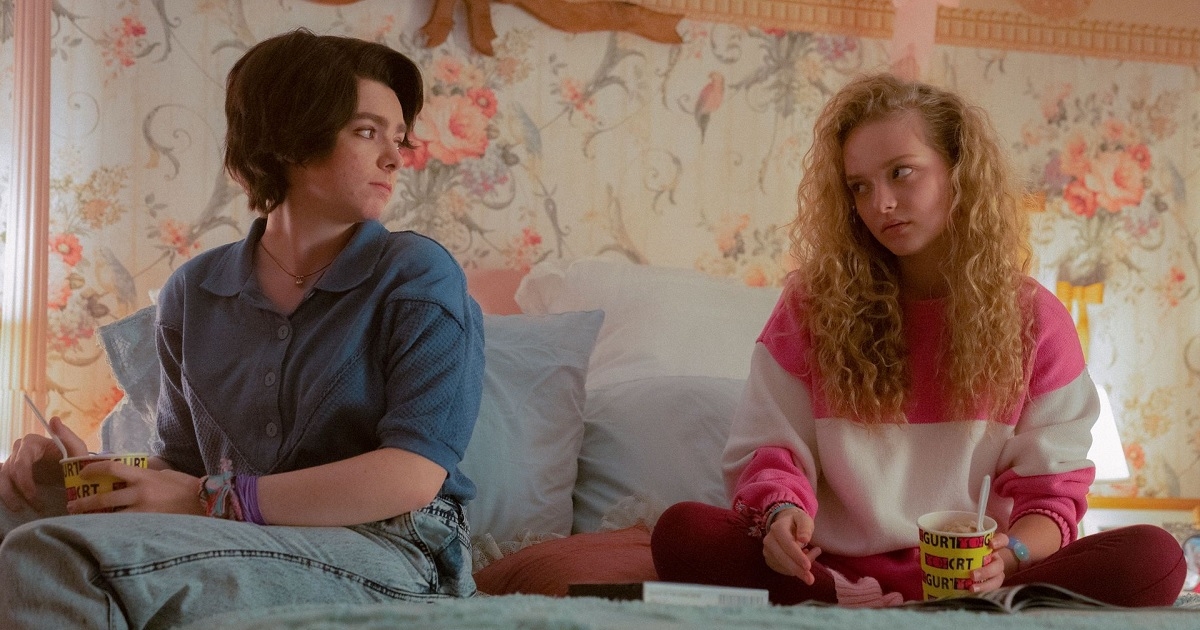The walls of the church-turned-gallery are decorated with brightly colored papier-mâché sweets and post-futuristic TV sets on top of cardboard boxes.
The new exhibition, “We Feed & Nourish Each Other,” was created by local freelance illustrator Agnes Barton-Sabo and displayed at the Corvallis Center for the Arts. Trained in the traditional visual arts, they rediscovered papier-mâché due to the resources available to them during the pandemic.
Papier-mâché is an accessible and approachable form of sculpture because it is created with household materials – paper or cardboard layered with paste.
“I needed an art project to work on because that’s how I express my feelings and survive,” Barton-Sabo said. Motivated by the need to work out their feelings about isolation and connection with others, specifically not feeling stuck or sucked into despair, they explored the sustainable medium.
The pandemic shaped the exhibit in other ways as well.
Multicolored papier-mache cakes decorate the walls of the Agnes Barton-Sabo exhibit at the Center for the Arts in Corvallis on August 3, 2022.Sebastian Gracie Fultz/High School Journalism Institute
An avid baker, Barton-Sabo missed people – and provided for those they cared about. Food is a common theme in their work, which is why their latest exhibit features papier-mâché recreations of comfort foods marked with affirmations.
Together, those elements show how people interact with each other and care for each other.
“I longed to nurture people by feeding them,” they said. “When you come over to my house, I’m always going to be giving you food.”
Inspired by sculptor Claes Oldenburg and installation artist Jenny Holzer, Barton-Sabo’s art has been so colorful and extraordinary.
“They’ve always had this kind of whimsical and decorative style,” said Hester Coucke, the Arts Center’s outgoing curator.
Barton-Sabo credits their parents, who are also artists, for nurturing their creativity in their youth. Their parents worked with visual images and words, which influenced Barton-Sabo’s style of adding letters to their drawings.
Imagery, says Barton-Sabo, conveys meaning in one way, while written messages work in another way to convey their point of view. But when you put them together, they “become something new that people can approach from multiple directions.”
Agnes Barton-Sabo’s papier-mache recreation of a serving tray-sized shrimp.Sebastian Gracie Fultz/High School Journalism Institute
Working in a less familiar medium brought its own challenges. Due to their background in illustration, Barton-Sabo is used to controlling all aspects of the creative process.
However, there is some unpredictability associated with Papier-mâché.
“I needed to remind myself not to get wrapped up in trying to make things photorealistic,” says Barton-Sabo, “just to give in to playing more and exploring what was going to happen with the materials this on their own.”
One display piece recreates a pink-frosted vanilla cake cut in half – and with a hand file embedded, as if it had been baked inside. The phrase, “We have the tools we need to get them for free,” is printed against the layers of the cake in teal.
“I wanted the messages to focus on reminding people how much community and working together is essential to our survival and progress,” he said.
Barton-Sabo’s creativity is also channeled through their alter ego, Betty Turbo, an identity they adopt when they make illustrations.
They chose the name in college to separate their photographic art from their drawings.
The first name “Betty” comes from their grandmother, and the last name was to add something unexpected.
Coucke said Barton-Sabo’s alter ego was a perfect representation of their artistic style.
“(The first name) gives you this familiar feel. … It’s nice and it’s safe,” Coucke said. But the surname Turbo, according to Couke, says, “Don’t mess with me, I’m a force to be reckoned with.”
Coucke appreciates Barton-Sabo’s artistic energy in a time when many felt stuck.
“You can’t help but walk away with a smile and feel a little more cheerful than you did when you walked in,” Coucke said.
Ultimately, Barton-Sabo hopes that people will laugh and find joy in their exhibit as they look back on a time that was difficult for them.
Feeding and nourishing each other, they say, comes from food and art.
It “makes us feel light and joyful for a few minutes or seconds,” says Barton-Sabo, “which is really essential to survive in a world where a lot of negative things are happening.”
For more information about The Arts Center, visit theartscenter.net. For more information on Agnes Barton-Sabo’s work, visit bettyturbo.com.
— Sebastian Gracie Fultz, Leodis V. McDaniel High School
– Hannah Kaufmann, Beaverton High School
This story was produced by student reporters as part of the High School Journalism Institute, an annual collaboration between The Oregonian / OregonLive, Oregon State University and other Oregon media organizations. For more information or to support the program, visit oregonlive.com/hsji.
Note to readers: if you buy something through one of our affiliate links we may earn a commission.



